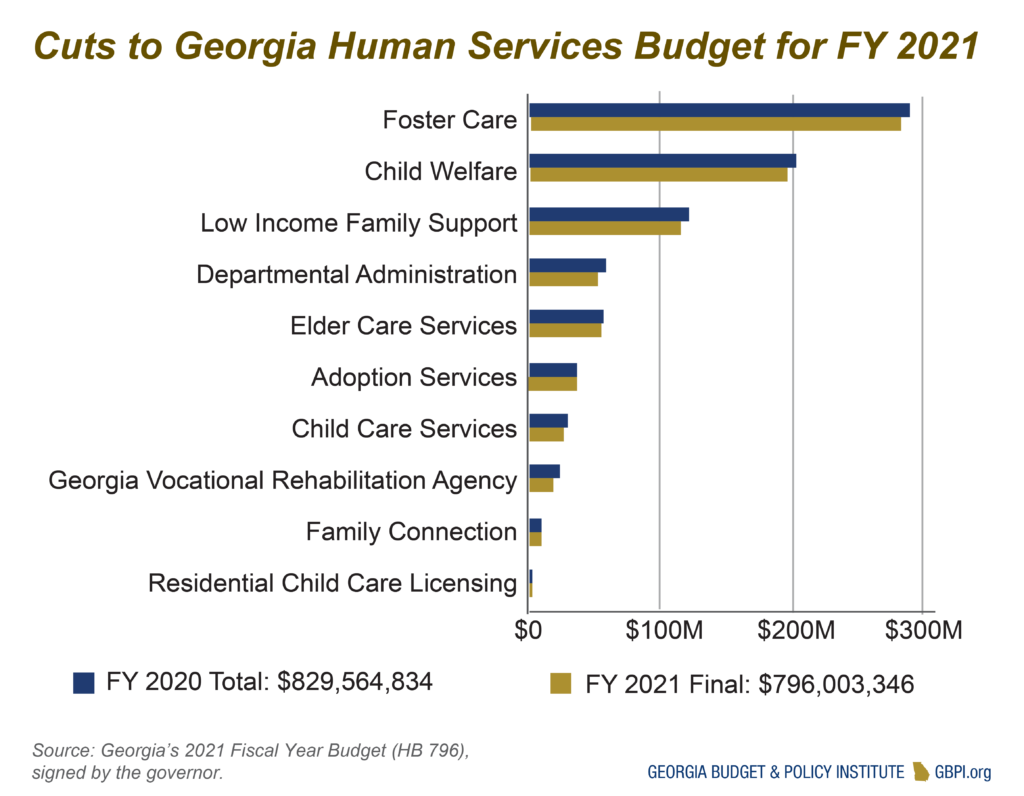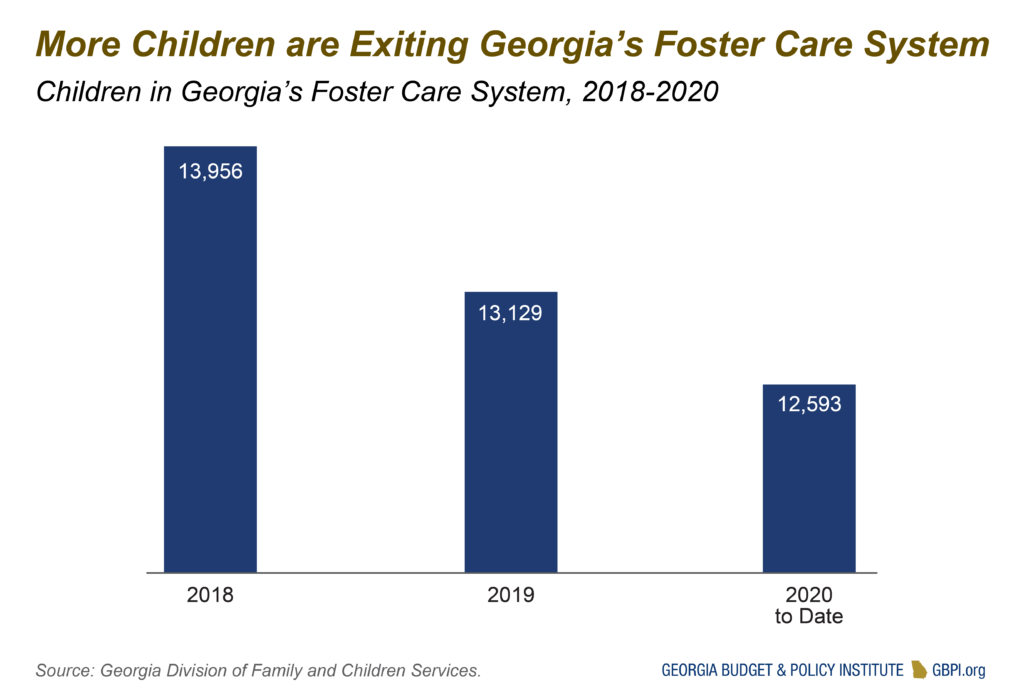The $796 million FY 2021 budget for the Department of Human Services reduces spending to protect the safety of Georgia’s most vulnerable children and families by $34 million. The Department was not spared from COVID-19’s effect on the state budget.
The largest share of state funding for the agency will remain in child welfare and foster care related services in FY 2021. The Division of Family and Children Services’ efforts to protect vulnerable children account for about 60 percent of the agency’s overall budget.
The state invests state dollars to maintain eligibility staff for federal low-income assistance programs such as Medicaid, the Supplemental Nutrition Assistance Program (SNAP) and Temporary Assistance for Needy Families (TANF). Smaller yet vital programs such as vocational training for adults with disabilities and elder protection services account for the remaining funds.
Child Welfare and Foster Care
Georgia will spend a combined $516 million on Child Welfare, Foster Care and Adoption Services in FY 2021. Addressing the needs of Georgia’s youth in foster care and investigating the abuse of children remains a top priority for the Department of Human Services despite the call to reduce spending.
Child welfare funding will fall by 3 percent by scaling back contracts to community-based providers of educational services for children in state custody, reducing travel and eliminating vacant positions. The budget also eliminates an outdated child abuse registry, which has been replaced by the state’s SHINES database and allows caseworkers to investigate reports of child abuse in a timely manner.
Modest reductions to foster care will occur naturally as a result of more youth exiting the foster care system.
COVID-19 and Georgia’s Unemployment Rates
The COVID-19 pandemic exacerbated economic hardship in Georgia. In just four months, claims for unemployment benefits soared to more than two million, wiping out all gains made since the Great Recession. Prior to the pandemic, Georgians in many pockets of the state were already struggling with unemployment, jobs offering low wages and fewer hours than they are willing to work or simply a scarcity of quality job opportunities. Moreover, Georgians of color and women were disproportionately represented in jobs that fail to offer economic mobility.
The COVID-19 crisis has exposed the insufficiency of the landscape of support for low-income Georgians. Unemployment rates have skyrocketed in many counties. These challenges lead to greater demand for safety net support, which would normally require that the agency add additional case workers to administer benefits and help individuals find work that pays family-supporting wages.
Unemployment filing trends across race during COVID-19 have begun to run parallel to those of the Great Recession: Black and Latinx workers have been consistently overrepresented among unemployment claimants. As Georgia reopens segments of the economy and workers are called back to work, Black and Latinx workers are already showing signs of slower recovery.
Cuts to the Safety Net Will Worsen Economic Hardship
The FY 2021 budget reduces safety net spending from $121 million to $115 million. The $6 million cut affected funds that help to pay the salaries of hundreds of state employees who administer federal safety net programs that provide a base level of support for people until they get back on their feet. The funds are also used to contract with community-based organizations that help people with low incomes enroll in public assistance and access job training opportunities.
Unlike child welfare and foster care, low income support programs administered by the Department depend overwhelmingly on federal dollars. However, state funds support the systems that make access to those federally-funded programs possible, and Georgia cuts those state funds. For example, the budget reduces funding for Georgia Gateway, the state’s online eligibility system and also cuts funding for community partnerships that help people with low incomes find employment, a requirement of Georgia’s Temporary Assistance for Needy Families Program (TANF).
Finally, Georgia cuts funding for direct cash assistance as well, and has, since the Great Recession, used federal TANF funds to supplant state funds in child welfare and foster care.

Child Care
The Department of Early Care and Learning provides access to affordable child care for working families with low incomes. Parents who receive child care subsidies experience fewer work disruptions, stay employed longer and enjoy higher family earnings.
The FY 2021 budget reduces spending by $7 million for the Quality Rated Subsidy Grants offered to providers, which create child care slots for families with low incomes. This will impact about 2,000-3,000 slots; however, the agency will allow the impacted families to convert to a traditional Childcare and Parent Services (CAPS) scholarship using existing federal funds. This is intended to mitigate families losing access to affordable child care. As of July, 40 percent of child care providers have closed due to the COVID-19 pandemic with many not expected to reopen.
The annual cost of child care for two children in Georgia was about $15,000 in 2018. Child care expenses can consume more than half of a low-income family’s budget. The state’s child care assistance program serves about 50,000 children per week, but it is likely more than 364,000 income-eligible children in low-income working families need it. More funding is needed to ensure all Georgia parents can afford high-quality child care and parents are not left behind in the state’s economic recovery.













